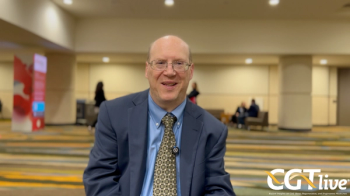
Elevidys Shows Slight Statistical Improvements on Time to Rise, 10-Meter Walk/Run Despite NSAA Fail
The gene therapy is up for priority review with a PDUFA date of June 21, 2024.
While Sarepta’s phase 3 EMBARK trial (NCT05096221) of delandistrogene moxeparvovec (Elevidys, SRP-9001) gene therapy has failed its primary endpoint, primary data from the trial demonstrate some small, but statistically significant differences from placebo in key secondary endpointsin participants with
The full one-year data from EMBARK were presented in a poster at
“What's really going to tell the story is as these patients are followed over longer periods of time. There’s a lot of challenges in showing efficacy, even with something that may be fairly efficacious, over such a short period of time,” Asher told CGTLive® during the conference.
As of week 52, post-treatment, the safety profile of delandistrogene moxaparvovec has continued to be manageable and consistent with previous data. The trial’s primary endpoint, change in NSAA total score from baseline compared with placebo was not met, as
READ MORE:
“I think it's going to be a process of learning for a specific population over a certain span of time, what is the most sensitive measurement in the case of an intervention? …What happens when you intervene may not be the opposite of what happens in natural history. Every time we do one of these trials, or anyone that does one of these trials with a new intervention, there is no [previous work] to go on,” Asher said.
Asher also shared some lessons that Sarepta has learned while assessing the therapy in patients with DMD, including a trend of stabilized NSAA while time to rise is under 5 seconds and a trend of impending decline when time to rise is over 5 seconds.
Delandistrogene moxaparvovec was a
REFERENCES
1. Mendell JR, Muntoni F, McDonald CM, et al. Safety and efficacy of delandistrogene moxeparvovec versus placebo in Duchenne muscular dystrophy: Phase 3 EMBARK primary results. Presented at: ASGCT 27th Annual Meeting, May 7-10; Baltimore, Maryland.
2. Sarepta Therapeutics announces topline results from EMBARK, a global pivotal study of ELEVIDYS gene therapy for Duchenne muscular dystrophy. News release. Sarepta Therapeutics. October 30, 2023. https://investorrelations.sarepta.com/news-releases/news-release-details/sarepta-therapeutics-announces-topline-results-embark-global-0
3. Sarepta Therapeutics Announces FDA Approval of ELEVIDYS, the First Gene Therapy to Treat Duchenne Muscular Dystrophy. News release. Sarepta Therapeutics. June 22, 2023.
4. Sarepta therapeutics announces U.S. FDA acceptance of an efficacy supplement to expand the Elevidys indication. News release. Sarepta Therapeutics, Inc. February 16, 2024. Accessed February 16, 2024.https://investorrelations.sarepta.com/news-releases/news-release-details/sarepta-therapeutics-announces-us-fda-acceptance-efficacy?_ga=2.242068545.254033713.1708093077-1826905377.1708093076
Newsletter
Stay at the forefront of cutting-edge science with CGT—your direct line to expert insights, breakthrough data, and real-time coverage of the latest advancements in cell and gene therapy.

















































